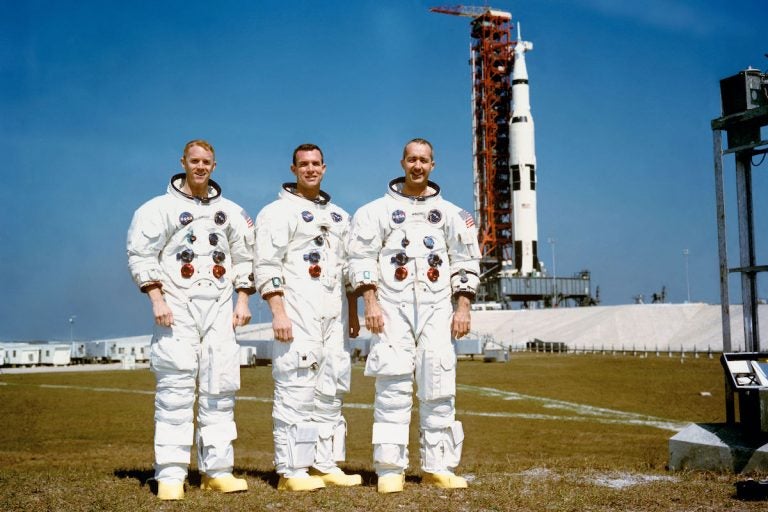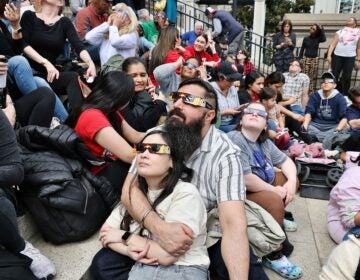50 Years On
Listen 05:39
These three astronauts are the prime crew of the Apollo 9 Earth-orbital space mission. Left to right, are Russell L. Schweickart, lunar module pilot; David R. Scott, command module pilot; and James A. McDivitt, commander. In the right background is the Apollo 9 space vehicle on Pad A, Launch Complex 39, Kennedy Space Center (KSC). They are pausing momentarily during training for their scheduled 10-day mission. (NASA)
“The Apollo Chronicles” by regional producer Rotfeld Productions premieres at The Franklin Institute next week at Night Skies Observatory (Tuesday, June 11).
All four episodes, which reveal a new understanding of just how NASA’s Apollo program came to be, will be featured at the Franklin Institute this month and next month leading up to the anniversary day itself (launched 7/16/69 – landed on the surface of the moon 7/20/69 – returned to Earth 7/24/69.
On Tuesday the producers will share their journey of creation telling us their stories of how they acquired the unbelievable footage and interviews with flight engineers, flight controllers, politicians, and the astronauts themselves.
In anticipation of a return to the moon; three commercial services begin providing lunar lander services to NASA through The Commercial Lunar Services Program.
They will ferry up to 23 NASA provided payloads to three different locations where they’ll conduct science investigations and demonstrate advances technologies in preparation for our return to the moon now proposed for 2024.
In this case, NASA is a customer receiving service from a commercial provider.
Missions are currently scheduled to begin dropping on the moon as early as September 2020 and all are expected to be completed by 2021.
This Thursday makes the 16th year since solar system spacecraft Pioneer 10 left the solar system.
Launched in 1972, it was the first spacecraft to reach the planet Jupiter.
Last heard from in 2003, it’s currently 11 billion miles out and headed toward Taurus, where in 90,000 years, it’ll pass closer to a star (just under a light year) than any of the other four interstellar spacecraft will fly in the next few million
WHYY is your source for fact-based, in-depth journalism and information. As a nonprofit organization, we rely on financial support from readers like you. Please give today.




